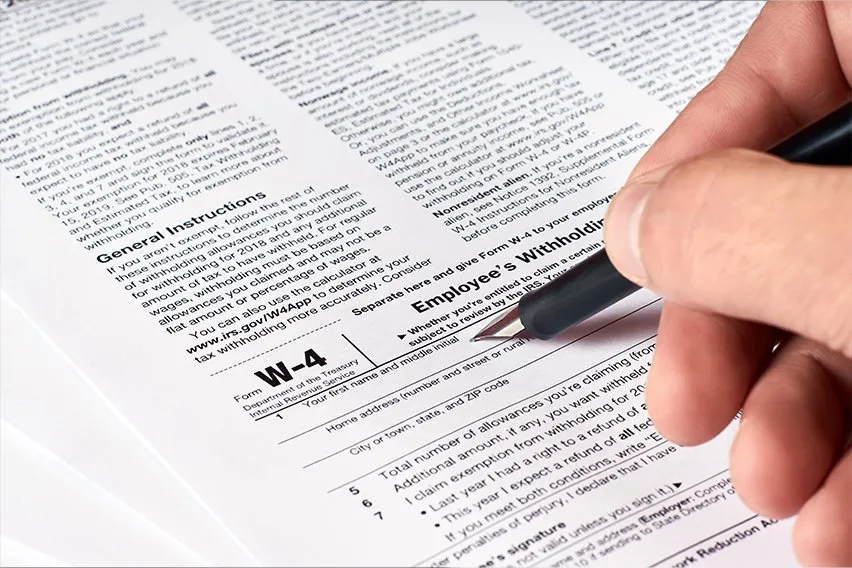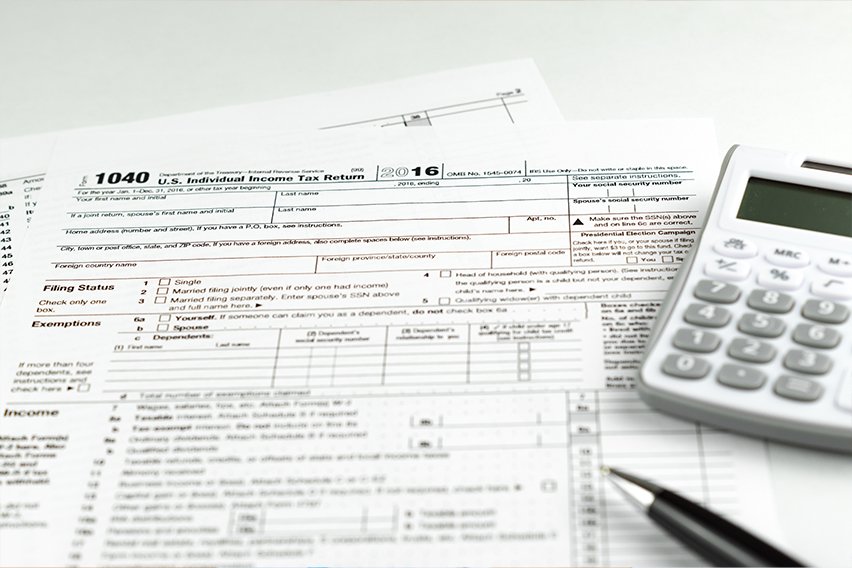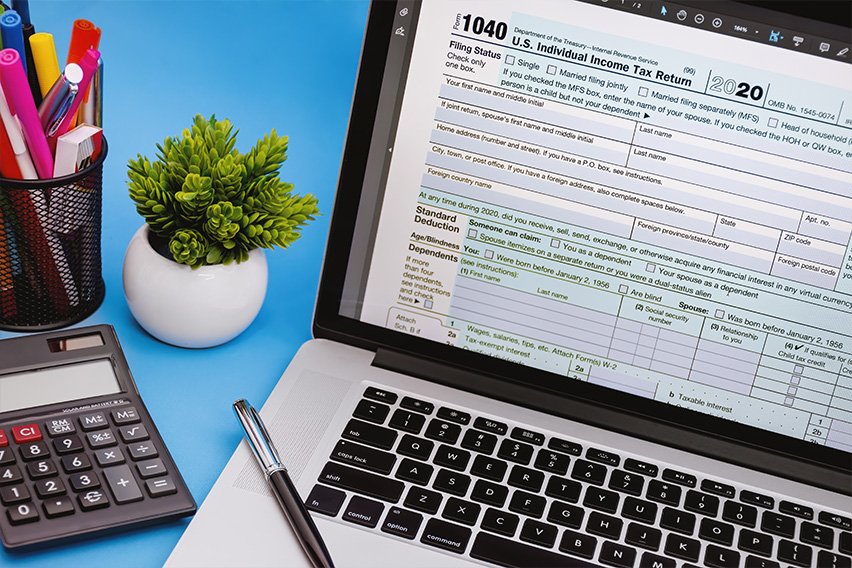What is a W-4 Form?

No matter how much experience you have as an employee (or as an employer), there are plenty of important tax details and paperwork processes that can be difficult to juggle during your business journey. Whether you’re training another person to do tax prep, or you need a refresher for yourself, you might be asking “What is a W-4?”
In this guide, you’ll learn about the specific sections of a W-4 form and receive detailed instructions for completing and submitting it.
This post also covers where you can locate the form, how it is used to prep payroll and tax information, and what the implications are for filing time.
Here’s What We’ll Cover:
When Does an Employee Submit a W-4 Form?
Where Can I Get a Copy of Form W-4?
What are the Benefits of a W-4?
What Does ‘Exempt from Withholding’ Mean?
Tax Implications for Business Owners
More Tax Resources for Business Professionals
What Does a W-4 Form Do?
A W-4 is an essential tax form from the Internal Revenue Service (IRS) that gives every employed person in the United States the opportunity to indicate their personal tax situation to a respective employer. Using the information provided on the form, an employer knows how much to withhold in federal income taxes and other necessary deductions.

If you are an employee submitting this form, your employer will be able to learn important details about your background, including:
- Filing status (married or single)
- Employment status (one or several jobs)
- Amount of tax credits
- Amount of money for additional withholding
- Number of dependents or family members claimed
Individual Employee Responsibility
It’s vital that all employed persons understand that the information shared on a W-4 directly affects withholding amounts per paycheck. Based on your responses, it’s possible that employers may withhold too little or too much money as it relates to your tax return.
Although the withholding amount is automatically calculated in many payroll scenarios, the amount of money and taxes differ. When you file your tax return, you will gain additional insight as to whether the deductions and allowances are correct.
When Does an Employee Submit a W-4 Form?
Whenever you start a new job, you’ll likely have the opportunity to fill out a W-4 form.
If you need or want to make adjustments to your W-4, which is also known as the Employee’s Withholding Certificate, you can do so at any time you experience certain life changes. Times that you may want to submit a new form include:
- Changes in marital status
- Addition of a new child (for claiming as a dependent)
- Additional income earned from other job sources
Any time you update the W-4 form, your employer has more information about what to withhold from your paycheck. If you have recurring employment changes, it’s wise to update your W-4 annually.
What Does an Employer Do with the W-4?
According to government rules, an employer doesn’t need to submit each employee’s forms directly to the Internal Revenue Service (IRS). The company should, however, keep either electronic or physical copies on file for all employees.
For small business owners and any organization without a large Human Resources or payroll department, this process should involve the proper organization and file maintenance in order to prevent a tax or payment error.
Sections of a W-4 Form
Form W-4 is broken up into five simple sections. Unless otherwise noted, you should complete each step on the Employee’s Withholding Certificate to the best of your ability. This starts by providing your correct taxpayer identification number (an SSN in most cases), which correctly links you to your tax status and liability.
Below is a high-level overview of each section and the type of information that you will be asked to provide on your W-4 form.
Step 1: Enter Personal Information
The first box on Form W-4 is perhaps the easiest to complete. For this section, you’ll need:
- First name, middle initial, and last name
- Street address
- City, state, and zip code
- Social Security Number
- Filing status (Single, Married Filing Jointly, or Head of Household)
Additionally, you will be asked to verify whether or not the name provided on your W-4 matches the legal name on your Social Security card. This is to ensure that your Social Security contributions are correctly credited by the Social Security Administration (SSA).
Step 2: Note Multiple Jobs or Spouse Income
Step 2 is one section of the W-4 that not everyone needs to complete. The form notes that users should only finish this section if it is applicable, including when:
- You hold more than one job at a given time
- Your spouse also works, and you’re filing jointly
In Step 2, you are encouraged to use the IRS W-4 Estimator when submitting a new Form W-4. This tool helps clarify your tax situation based on your filing and career status, and it helps calculate tax withheld so that you can avoid future IRS penalties.
In this step, users are also directed to use the Multiple Jobs Worksheet. In addition to using the worksheet, the IRS also recommends submitting a W-4 for each separate employer and determining how much tax liability you have for any self-employment income.
Using the Multiple Jobs Worksheet
Within Step 2, there is a reference to the Multiple Jobs Worksheet. This can be found on page 3 when you download or receive a new W-4 form.
The purpose of the Multiple Jobs Worksheet is so that employees can calculate accurate withholding. The worksheet provides a few hypothetical scenarios which may affect income taxes: an annual salary of more than $120,000, possessing at least two jobs at the same time, or holding three or more jobs.
The worksheet also includes sections to enter the number of pay periods during which you expect to receive a paycheck from a single employer within one year.
Step 3: Claim Dependents
In the third step of Form W-4, you have the opportunity to claim dependents. This section applies if your income is $200,000 or less as a single person, or $400,000 or less if married filing jointly.
To calculate your dependent tax benefits (in regards to federal income taxes only), follow the steps to complete the math. This includes:
- Multiplying the number of qualifying children under age 17 by $2,000
- Multiplying the number of other qualifying dependents by $500
You should then add up the total amount of money and place it in the designated box.
Step 4: Make Optional Adjustments
In Step 4, you have the option to include additional tax withholding. When you file your tax return, this ensures that you do not owe excess money to the IRS.
On Form W-4, you can make an extra withholding allowance for:
- Other income (not from jobs or traditional employment)
- Deductions, other than the standard IRS deduction
- Extra amount to withhold from your paycheck (per pay period)
When you fill out a new W-4 form, you may not need to fill out this section. If, however, you want to ensure that you do not owe a tax bill at the end of the year, you can make additional adjustments.
Using the Deductions Worksheet
The Deductions Worksheet can be found under the Multiple Jobs section on page 3.
The purpose of this worksheet is that it allows you to reduce or change your withholding tax amount. Included in this section is information about itemized deductions, medical expenses, student loan interest, charitable contributions, and other individual itemizations. These questions may not apply if you (and your spouse if filing jointly) opt for the standard deduction at tax time.
If you want to avoid fees or a high tax bill, the Deductions Worksheet can help you make the right tax request from your employer.
Step 5: Sign
The last and final step is the easiest when you fill out a new W-4 form. All you have to do here is sign and date on the corresponding lines. Since this is an official and legal IRS document, signing implies that all information is complete and correct under penalties of the law.
How to Fill Out a W-4
In the event that you make an employer switch, experience a life event, or simply want to adjust the tax to withhold on your regular paycheck, it’s helpful to know how to fill out Form W-4.
The below steps will ensure that you are in compliance with the IRS and that your W-4 form is accurate.
- First, make sure to get or download the correct copy of the form, as the forms are updated each year. If your employer doesn’t provide it, access it directly from the IRS. Do not download or use any unofficial documents from third parties, as these may not be correct.
- Next, manually write out each required section of Form W-4. Refer to the steps outlined above to know what to expect as far as your withholding allowances.
- Then, read back over the form for accuracy, and provide a signature once all steps are complete.
- Finally, return the W-4 form to your employer, based on their request for a digital (scanned) or paper copy.
What to Do After You Submit to Your Employer
After you receive your first paycheck following a W-4 update, it’s a good idea to verify that your employer has deducted the anticipated amount of income taxes and other deductions during the first pay cycle.
Remember, your employer is not responsible for your personal tax liability. Although an employer must pay their own share of taxes, your individual filing status, federal and state tax liability, and allowances are your responsibility to maintain.
Where Can I Get a Copy of Form W-4?
The first place to check for a new Form W-4 is from your employer. Many companies provide the Employee’s Withholding Certificate as part of the standard onboarding paperwork electronically or physically.
If you do not receive a new W-4 from your employer, or if you wish to secure one for your own income tax purposes at any time throughout the year, you can download the most recent version directly from the IRS website.
The most current W-4 Form is available in a downloadable and print-ready PDF document; the form comes with action steps, clarifying directions, and withholding worksheets to help you calculate a specific deduction or withholding amount based on your own tax and employment status.
What is the Difference Between a W-2 and W-4 form?
In the current tax system, the W-2 and W-4 forms complement each other, but they do not serve the same purpose.
- Form W-4 provides your employer with the income tax to withhold from your paycheck and any tax credits that factor into your payment status.
- A W-2 Form shows the amount of money and tax withheld from you for the entire tax year. It is a summarizing document that is essential to filing your tax return, receiving a tax refund (if eligible), and completing your state returns.
An employee is responsible for creating and filling out the W-4, but an employer is responsible for preparing a W-2 by the annual deadline. When completing your tax return, you do not need to have a copy of Form W-4, although you may wish to reference it if there are questions about deductions.
What is the Difference Between a W-9 and W-4 form?
When comparing a W-9 Form and a W-4 Form, the W-4 process is reserved for employed persons only. W-4 forms are directly tied to federal taxes withheld by an employer, usually set in place when you start a new job and receive your first paycheck.
On the other hand, individuals who rely on the W-9 process include:
- Independent contractors
- Freelancers
- Vendors
- Any individual receiving non-employed pay from a business
When you fill out a new W-4 or W-9, it is assumed that you are still responsible for paying your own state and federal tax.
Without a W-4, however, the employer or business is not responsible for subtracting any tax amount from a person’s paycheck or invoice. Freelancers and contractors should take note of their tax obligations in the absence of a W-4.
Where Do I Send the Form?
Employees should send a W-4 form directly back to an employer, as soon as possible. This is especially true when you first start a new job, but it’s also important if you want to update your current employer with any changes to deductions or withholding allowances.
You do not need to send Form W-4 back to the IRS, but you may retain it for your records in the event that you need to cross-check your tax return documents.
What are the Benefits of a W-4?
Submitting (and revisiting) your W-4 is beneficial for several reasons. The benefits include:
- Having accurate employer information in place to complete your annual tax return
- Paying the appropriate amount of federal income tax per paycheck
- Ensuring that your tax refund is not overly inflated (meaning that you could have used the money elsewhere or in other investments throughout the year)
- Helping you avoid steep tax penalties or fees at the end of the year as a result of paying too little state or federal income tax
- Preventing any error in your personal information or filing status
What Does ‘Exempt from Withholding’ Mean?
In some situations, employees may file a W-4 with a status of “exempt from withholding.” This means that the employee does not pay any federal income tax on money received from employers. Employers may encounter this situation very rarely, but it is still helpful to know what it is and why it takes place.
The following questions will help determine whether you are exempt from withholding.
- Did I owe no federal income tax the previous year?
- Do I expect to owe zero tax in the current year?
- Is my total on Form 1040 smaller than my refundable credits?
It is not illegal or incorrect to file as exempt, but you should always ensure that the correct situations and requirements apply. Otherwise, you may owe taxes on the money you earned from an employer. When in doubt, reference your previous tax returns to view your most recent exemptions.
Tax Implications for Business Owners
Although it’s the responsibility of each employee to accurately submit tax details, employers should be aware of their unique role in the W-4 process. An employer’s responsibilities may include:
- Ensuring that all data is accurately entered into personnel systems
- Being available to answer questions that employees may have (particularly in regards to withholdings, deductions, and pay)
- Having the know-how to flag questionable W-4 forms
- Contacting employees when a form is invalid or blatantly inaccurate
Responses on Form W-4 do not affect the amount of tax for which an employer is responsible. This includes FICA taxes, which are automatically deducted from each paycheck and are split between the employer and employed person.
Important Changes After 2020
A common misconception is that once you submit a W-4, you don’t need to think about it any longer. The IRS is continually updating tax processes, however, so it’s a good idea to revisit your tax forms if it’s been a while since you completed them.
Starting in 2020, the IRS made several key changes to the W-4 form, which have remained in place on the most current 2021 form. These changes include:
- Updating the name of the form to “Employee’s Withholding Certificate”
- Eliminating the Personal Allowances Worksheet
- Removing the ability to claim personal exemptions (based on the Tax Cuts & Jobs Act of 2017)
Whether or not your employer requests a new copy, if you haven’t completed an update since 2019 or before, download and submit a new form as soon as possible.

Different Types of W-4 Forms
Believe it or not, there are actually a few different versions of Form W-4. Although the purpose is mostly the same, the unique variations help calculate tax withholding in several scenarios, which are highlighted below.
Form W-4 (SP)
This is the same standard form, but it is specifically written for Spanish speakers. Spanish-speaking employees should complete and return the form as normal.
Form W-4P
If you hold a pension or annuity and would like to request a certain amount of money be withheld, you should use this version of the form. A completed copy directs your plan administrator to deduct an amount based on anticipated income from these sources.
Form W-4S
Form W-4S can be used to request a certain amount of withholding from sick pay. If you are entitled to this money within your benefits package and want to account for taxes, submit this form in conjunction with your other tax documents.
Form W-4V
Form W-4V is strictly voluntary and is used for government payouts, like Social Security or unemployment benefits. To avoid fees or penalties at the end of the year, you can use this form to acquire a tax withholding on money earned from these sources. There are often other tax benefits available when collecting these allowances.
The Bottom Line
As we’ve shared throughout this guide, the W-4 process is crucial for business, tax, and employment purposes. Not only does having an accurate W-4 ensure that each person receives the right sum on every paycheck, but this data also plays a role in determining whether you receive a tax refund or owe money to the IRS after submitting an annual return.
Although relatively simple to complete, the impact of a W-4 can be significant. As always, speak with a certified accountant or tax professional if you have detailed questions about the resulting impacts of your W-4 submissions.
More Tax Resources for Business Professionals
- The Complete ‘New Hire Paperwork Checklist’ for Your U.S. Small Business
- How to Calculate Withholding Tax: A Simple Guide for Small Business
- Top Traits for Your Tax Professional and How to Find a Good Accountant
- U.S. Tax 101: What is a W-9 Form?
RELATED ARTICLES

 How to Fill Out a W-4 Form: A Step-By-Step Guide (2024)
How to Fill Out a W-4 Form: A Step-By-Step Guide (2024) W2 vs W4: The Difference Between W2 and W4 IRS Forms
W2 vs W4: The Difference Between W2 and W4 IRS Forms Top 8 Tax Deductions for Photographers (2025)
Top 8 Tax Deductions for Photographers (2025) Real Estate Tax Deductions Every Business Should Know
Real Estate Tax Deductions Every Business Should Know Tax Deductions for Cleaning Businesses
Tax Deductions for Cleaning Businesses Construction Tax Deductions for Builders and Contracting Businesses
Construction Tax Deductions for Builders and Contracting Businesses